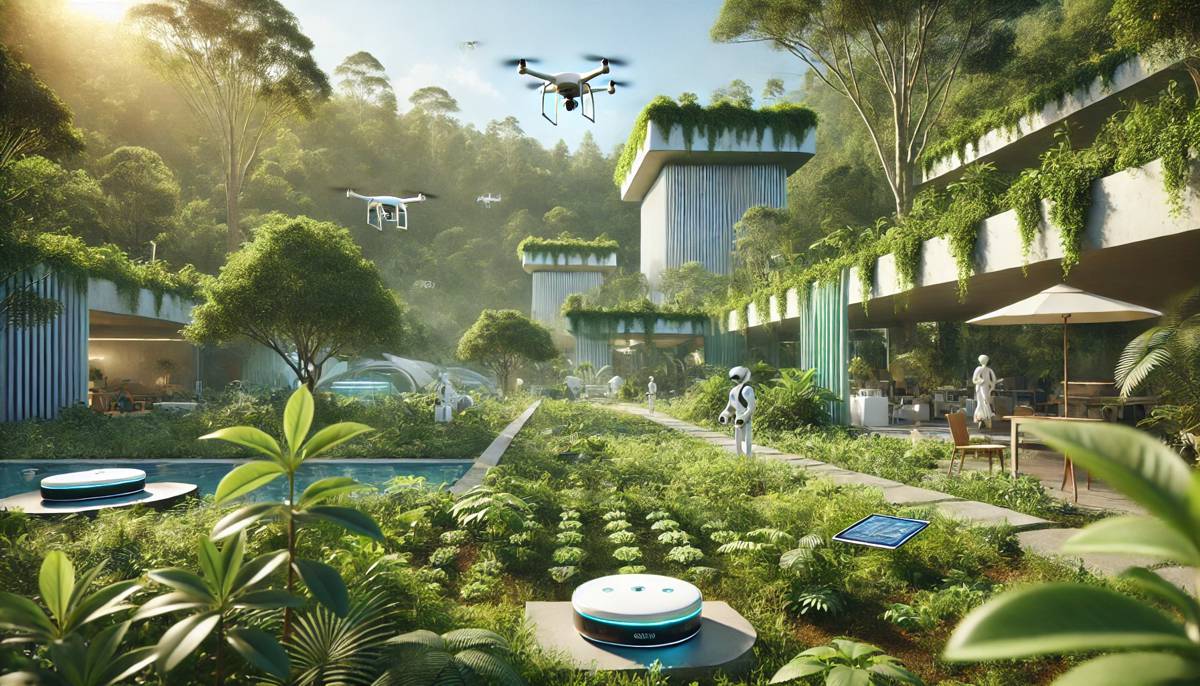Transforming Infrastructure and Nature with Sustainable Robotics
The global stage is set, environmental challenges are mounting, and infrastructure demands are growing increasingly complex. With the world grappling to balance sustainability with development, robotics has emerged as a critical player in this balancing act.
Leading the charge is the DroneHub at NEST (Next Evolution in Sustainable Building Technologies), a pioneering research and innovation centre operated by Empa, the Swiss Federal Laboratories for Materials Science and Technology.
This facility is more than just a laboratory—it’s a proving ground for cutting-edge bio-inspired drones and robotic technologies designed to live autonomously, gather critical data, and perform restorative actions in the built and natural environments.
A Strategic Partnership for Sustainability
This revolutionary initiative stems from a collaboration between Empa and Imperial College London, driven by Professor Mirko Kovac, a trailblazer in aerial robotics. In 2019, Kovac established the Imperial-Empa partnership, fostering a shared vision for infrastructure robotics and ecosystem management. Now, the DroneHub takes centre stage as Kovac assumes a new joint professorship in Sustainability Robotics between Empa and EPFL (École Polytechnique Fédérale de Lausanne), cementing the DroneHub’s role as a cornerstone for research and development.
Empa director Tanja Zimmermann aptly sums up the significance of this venture: “The opening of this new research platform at NEST is not only a significant milestone in drone research but also a strong testament to the importance of research collaborations, such as the partnership between Empa and Imperial College London, which we will officially extend during the opening ceremony.”
Reimagining Robotics for Infrastructure and Nature
Kovac’s vision for drones goes beyond their conventional roles. He sees them as “an immune system for the environment,” capable of high-precision tasks like repairing structural cracks or engaging in ecological restoration.
This ambitious outlook positions drones as indispensable tools for addressing pressing challenges such as biodiversity loss, climate change, and urban sustainability.
At the DroneHub, these ideas are put into practice through three specialised environments:
- Aerial Additive Manufacturing Zone: A testbed for drones’ 3D printing capabilities to repair infrastructure.
- Biosphere Environment: A space for studying autonomous, biodegradable robots and biodiversity monitoring.
- Building Façade System: A platform to explore how drones can integrate with architecture for autonomous maintenance and emergency response.
Revolutionising the Built Environment
The Aerial Additive Manufacturing area is nothing short of groundbreaking. Here, drones equipped with 3D printing technology repair infrastructure using interchangeable wall elements. The outdoor nature of this zone allows for real-world testing, exposing drones to wind, turbulence, and other environmental variables. By simulating real-life challenges, researchers can fine-tune these technologies, ensuring they’re ready for deployment in unpredictable conditions.
Beyond technical validation, this space could reshape maintenance practices in the construction sector, cutting costs, enhancing safety, and significantly reducing the carbon footprint associated with traditional methods.
Nature-Inspired Technology for a Sustainable Future
In the biosphere environment, innovation takes flight—literally. Robots inspired by nature are tested for their ability to navigate ecosystems autonomously. What makes this area unique is its focus on biodegradable materials. Once these robots complete their tasks, they degrade harmlessly, leaving no environmental footprint.
Interestingly, part of this biosphere also serves as a greenhouse for “bio-hybrid robots.” These experimental machines blend living materials, such as plants, with robotics, bridging biology and technology. Such advancements could redefine how robots interact with their surroundings, offering new ways to monitor ecosystems and promote biodiversity.
Emergency Response and Everyday Resilience
The DroneHub’s building façade is another key innovation. Designed to explore how drones can function as part of a building’s infrastructure, this area highlights their potential in emergency scenarios. Imagine a fire drone swooping into action during a blaze, navigating dangerous environments to relay critical information or perform life-saving tasks.
By creating robots capable of working alongside humans, the DroneHub is paving the way for a future where technology doesn’t just coexist with humanity—it enhances our daily lives.
Driving Global Sustainability
The DroneHub’s overarching mission is clear: accelerate the development of robotics systems that harmonise with nature while addressing global sustainability goals. This isn’t just about creating smarter robots; it’s about rethinking how technology interacts with our world.
By fostering research that blends ecological understanding with technological innovation, the DroneHub is not only solving today’s problems but also laying the groundwork for a more sustainable tomorrow.
Shaping a Future of Possibilities
The DroneHub isn’t just about drones—it’s about redefining our relationship with technology. By pushing the boundaries of what’s possible, this initiative exemplifies how innovation, collaboration, and sustainability can come together to tackle the world’s most pressing challenges.
With its bold vision and transformative potential, the DroneHub is setting the stage for a future where robotics doesn’t just support humanity—it uplifts it.




















